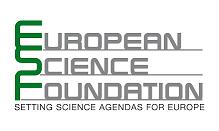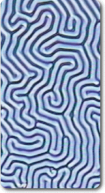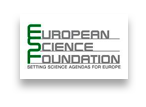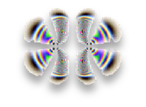Background
Europe in the history of liquid crystal research
In the development of the understanding of the liquid crystalline state of matter, Europe has had a central role. This applies on the one hand in terms of fundamental research, seminal contributions given by e.g. the Germans Reinitzer, Lehmann, Vorländer, Saupe and Helfrich, the French Mauguin, Grandjean, Friedel and de Gennes, the UK researchers Bernal, Frank and Leslie, the Swede Oseen, the Pole Miesowicz and the Italian Luzzati [1]. In terms of the commercial exploitation, Europe's chemistry industry has long been and still is very active, the efforts of e.g. Merck, BDH and Roche having been fundamental for building up today's highly successful liquid crystal display industry, whereas companies like Unilever and Nestlé were early in exploring the potential of lyotropic liquid crystals for enhancing every-day products like detergents, processed foods or pharmaceuticals.
[1] T. J. Sluckin, D.A. Dunmur, and H. Stegemeyer, Crystals that flow: Classic papers from the history of liquid crystals, (Taylor and Francis, London, 2004).
[1] T. J. Sluckin, D.A. Dunmur, and H. Stegemeyer, Crystals that flow: Classic papers from the history of liquid crystals, (Taylor and Francis, London, 2004).
What are liquid crystals ?
Liquid crystals—sometimes referred to as anisotropic fluids—are thermodynamically stable phases between the crystalline solid state and the ordinary isotropic liquid, exhibiting a manifold of unique properties that are deeply fascinating as well as highly useful. Although more or less fluid, liquid crystals exhibit partial order with long-range orientational correlation and, in the cases of smectic/lamellar, hexagonal columnar and cubic phases, also a quasi-long range translational correlation in one, two and three dimensions, respectively.
The structures are formed through the self-organization of anisometric molecules (thermotropic liquid crystals) or of aggregates of amphiphilic molecules—e.g. phospholipids in living tissue or surfactants in detergents—or anisometric colloidal particles in a solvent (lyotropic liquid crystals). The main application of the former class is in liquid crystal displays (LCDs) while lyotropics so far are employed commercially foremost in detergents and in the cosmetic, pharmaceutical and food industries. In both cases, the industries in question belong to the multi-billion-euro category.
The structures are formed through the self-organization of anisometric molecules (thermotropic liquid crystals) or of aggregates of amphiphilic molecules—e.g. phospholipids in living tissue or surfactants in detergents—or anisometric colloidal particles in a solvent (lyotropic liquid crystals). The main application of the former class is in liquid crystal displays (LCDs) while lyotropics so far are employed commercially foremost in detergents and in the cosmetic, pharmaceutical and food industries. In both cases, the industries in question belong to the multi-billion-euro category.
An exciting stage of new developments
Today, the display-related themes that for many years have dominated research in the core liquid crystal community are receiving less attention in academia, such research now largely being driven by industry. Instead, several new topics are sprouting, focusing on entirely different issues. While the immense commercial success of flat panel displays has brought the concept liquid crystal to the broad public, these ordered fluids actually play a fundamental role and have great application potential also in very different contexts, e.g. in biology and biotechnology, materials science and nanotechnology.
The lamellar liquid crystalline state of cell membranes (internal and external) is crucial to the cell’s biological functions. DNA-based nucleosome core particles have been found to exhibit a rich liquid crystalline polymorphism under biologically relevant conditions. The function of the inorganic components in biomaterials—natural as in the skeleton or artificial as in implants—can depend sensitively on liquid crystalline properties of precursors or even of the components themselves. A famous example where liquid crystalline properties have been used to produce a commercially successful synthetic material is the super strong fiber Kevlar® and in nature we find similar liquid crystal-related materials in spider webs and in silk, from which several lessons are still to learn and which therefore are the focus of intense current research.
These roles of liquid crystals are still poorly exploited and they are likely to be at the focus of much of tomorrow’s research.
The lamellar liquid crystalline state of cell membranes (internal and external) is crucial to the cell’s biological functions. DNA-based nucleosome core particles have been found to exhibit a rich liquid crystalline polymorphism under biologically relevant conditions. The function of the inorganic components in biomaterials—natural as in the skeleton or artificial as in implants—can depend sensitively on liquid crystalline properties of precursors or even of the components themselves. A famous example where liquid crystalline properties have been used to produce a commercially successful synthetic material is the super strong fiber Kevlar® and in nature we find similar liquid crystal-related materials in spider webs and in silk, from which several lessons are still to learn and which therefore are the focus of intense current research.
These roles of liquid crystals are still poorly exploited and they are likely to be at the focus of much of tomorrow’s research.
New frontiers
A number of totally new ways of applying liquid crystals and the self-assembly processes underlying their formation are currently being developed or proposed, e.g. in advanced materials templated from liquid crystals [2], organic electronic and/or photoconductive components [3], actuators [4], sensors [5], photonic crystals and metamaterials [6], delayed-release drug delivery systems [7] etc. New fascinating research themes are continuously being opened, spanning liquid crystal, colloid and polymer science, bio- and nanotechnology, and resulting in an extremely rich scientific-technological playground.
While this is a very exciting era of exploration and broadening for European liquid crystal research, leaving traditional borders of liquid crystal science obsolete, it can be difficult to define a clear focus. Many different opinions—sometimes conflicting—regarding the most prosperous strategies for the continued development coexist. It seems likely that future liquid crystal research will rarely be conducted strictly as such, the research topics with the greatest potential being of strongly interdisciplinary character, dealing with liquid crystal-related aspects of e.g. biology and biotechnology, materials development, semiconductor device science or micro- and nanofluidics. The most promising approach is probably to conduct liquid crystal research as an integrated part of the broad field of soft matter physics and chemistry, currently growing strongly in interest worldwide with Europe being one of the main players. Indeed, as was pointed out by one of the founding fathers of the field, Pierre-Gilles de Gennes, liquid crystals constitute an archetypal category of soft matter, displaying a fantastic breadth in terms of structures, materials and functions [8].
[2] G. Armatas & M. Kanatzidis, 'Hexagonal mesoporous germanium', Science 313, 817 (2006); J. Baumberg, 'Breaking the mould: Casting on the nanometre scale', Nature Mater. 5, 2 (2006); J. Hulvat and S. Stupp, 'Anisotropic properties of conducting polymers prepared by liquid crystal templating', Adv. Mater. 16, 589 (2004); G. Scalia, C. von Bühler, C. Hägele, S. Roth, F. Giesselmann, and J.P.F. Lagerwall, ‘ Spontaneous macroscopic carbon nanotube alignment via colloidal suspension in hexagonal columnar lyotropic liquid crystals’, Soft Matter, 4, 570 (2008)
[3] Y. Yamamoto et al., 'Photoconductive coaxial nanotubes of molecularly connected electron donor and acceptor layers', Science 314, 1761 (2006); V. Lemaur et al., 'Charge transport properties in discotic liquid crystals: A quantum-chemical insight into structure-property relationships', J. Am. Chem. Soc. 126, 3271 (2004); M. O'neill & S. Kelly, 'Liquid crystals for charge transport, luminescence, and photonics', Adv. Mater. 15, 1135 (2003)
[4] S. Courty, J. Mine, A. Tajbakhsh & E. Terentjev, 'Nematic elastomers with aligned carbon nanotubes: New electromechanical actuators', Europhys. Lett. 64, 654 (2003); M. Li, P. Keller, B. Li, X. Wang & M. Brunet, 'Light-driven side-on nematic elastomer actuators', Adv. Mater. 15, 569 (2003)
[5] D. M. Walba, L. Eshdat, E. Körblova, R. F. Shao & N. A. Clark, 'A general method for measurement of enantiomeric excess by using electrooptics in ferroelectric liquid crystals', Angew. Chem. (Int. Ed.) 46, 1473 (2007); J. Brake, M. Daschner, Y. Luk & N. Abbott, 'Biomolecular interactions at phospholipid-decorated surfaces of liquid crystals', Science 302, 2094 (2003)
[6] C. Rockstuhl, F. Lederer, C. Etrich, T. Pertsch & T. Scharf, 'Design of an artificial three-dimensional composite metamaterial with magnetic resonances in the visible range of the electromagnetic spectrum', Phys. Rev. Lett. 99, 017401 (2007); J. Hwang et al., 'Electro-tunable optical diode based on photonic bandgap liquid-crystal heterojunctions', Nature Mater. 4, 383 (2005); I. Musevic, M. Skarabot, U. Tkalec, M. Ravnik & S. Zumer, 'Two-dimensional nematic colloidal crystals self-assembled by topological defects', Science 313, 954 (2006)
[7] M. Malmsten, 'Soft drug delivery systems', Soft Matter 2, 760 (2006); J. Barauskas, M. Johnsson & F. Tiberg, 'Self-assembled lipid superstructures: beyond vesicles and liposomes.', Nano. Lett. 5, 1615 (2005)
[8] P. G. de Gennes, 'Soft matter: more than words', Soft Matter 1, 16 (2005)
While this is a very exciting era of exploration and broadening for European liquid crystal research, leaving traditional borders of liquid crystal science obsolete, it can be difficult to define a clear focus. Many different opinions—sometimes conflicting—regarding the most prosperous strategies for the continued development coexist. It seems likely that future liquid crystal research will rarely be conducted strictly as such, the research topics with the greatest potential being of strongly interdisciplinary character, dealing with liquid crystal-related aspects of e.g. biology and biotechnology, materials development, semiconductor device science or micro- and nanofluidics. The most promising approach is probably to conduct liquid crystal research as an integrated part of the broad field of soft matter physics and chemistry, currently growing strongly in interest worldwide with Europe being one of the main players. Indeed, as was pointed out by one of the founding fathers of the field, Pierre-Gilles de Gennes, liquid crystals constitute an archetypal category of soft matter, displaying a fantastic breadth in terms of structures, materials and functions [8].
[2] G. Armatas & M. Kanatzidis, 'Hexagonal mesoporous germanium', Science 313, 817 (2006); J. Baumberg, 'Breaking the mould: Casting on the nanometre scale', Nature Mater. 5, 2 (2006); J. Hulvat and S. Stupp, 'Anisotropic properties of conducting polymers prepared by liquid crystal templating', Adv. Mater. 16, 589 (2004); G. Scalia, C. von Bühler, C. Hägele, S. Roth, F. Giesselmann, and J.P.F. Lagerwall, ‘ Spontaneous macroscopic carbon nanotube alignment via colloidal suspension in hexagonal columnar lyotropic liquid crystals’, Soft Matter, 4, 570 (2008)
[3] Y. Yamamoto et al., 'Photoconductive coaxial nanotubes of molecularly connected electron donor and acceptor layers', Science 314, 1761 (2006); V. Lemaur et al., 'Charge transport properties in discotic liquid crystals: A quantum-chemical insight into structure-property relationships', J. Am. Chem. Soc. 126, 3271 (2004); M. O'neill & S. Kelly, 'Liquid crystals for charge transport, luminescence, and photonics', Adv. Mater. 15, 1135 (2003)
[4] S. Courty, J. Mine, A. Tajbakhsh & E. Terentjev, 'Nematic elastomers with aligned carbon nanotubes: New electromechanical actuators', Europhys. Lett. 64, 654 (2003); M. Li, P. Keller, B. Li, X. Wang & M. Brunet, 'Light-driven side-on nematic elastomer actuators', Adv. Mater. 15, 569 (2003)
[5] D. M. Walba, L. Eshdat, E. Körblova, R. F. Shao & N. A. Clark, 'A general method for measurement of enantiomeric excess by using electrooptics in ferroelectric liquid crystals', Angew. Chem. (Int. Ed.) 46, 1473 (2007); J. Brake, M. Daschner, Y. Luk & N. Abbott, 'Biomolecular interactions at phospholipid-decorated surfaces of liquid crystals', Science 302, 2094 (2003)
[6] C. Rockstuhl, F. Lederer, C. Etrich, T. Pertsch & T. Scharf, 'Design of an artificial three-dimensional composite metamaterial with magnetic resonances in the visible range of the electromagnetic spectrum', Phys. Rev. Lett. 99, 017401 (2007); J. Hwang et al., 'Electro-tunable optical diode based on photonic bandgap liquid-crystal heterojunctions', Nature Mater. 4, 383 (2005); I. Musevic, M. Skarabot, U. Tkalec, M. Ravnik & S. Zumer, 'Two-dimensional nematic colloidal crystals self-assembled by topological defects', Science 313, 954 (2006)
[7] M. Malmsten, 'Soft drug delivery systems', Soft Matter 2, 760 (2006); J. Barauskas, M. Johnsson & F. Tiberg, 'Self-assembled lipid superstructures: beyond vesicles and liposomes.', Nano. Lett. 5, 1615 (2005)
[8] P. G. de Gennes, 'Soft matter: more than words', Soft Matter 1, 16 (2005)
Background
The case for an exploratory workshop
Goals & prospects

Meeting strategy

The venue
LC Lab Bandol
The speakers
24 world-class scientists from eight European countries
The program
Titles and abstracts
The organizers





